Pressing the Reset Button

As teachers we are continuously reflecting upon promoting healthy and productive classroom cultures. In designing experiences for children, we consider what we know about optimal learning conditions; those that are high challenge and low risk, those that invite students to experience a state of relaxed alertness.
Often times at Opal School, we find that working with materials can not only help support these conditions of optimal learning but can also serve as a reset. We all need a reset every now and then, whether a reset after an overload of information or a reset after an emotionally charged experience or a reset after being completely focused on a single idea or project for a period of time. Resets offer a moment to breathe. They serve to refresh, to rejuvenate, to offer different perspectives, to think and open new possibilities. Resets might look like reflecting on an experience through the lens of a new material or simply losing oneself in the stroke of a paintbrush or the mark of a pen.
It’s been a year of transition so far in Opal 4 for a whole host of reasons, including bringing together two groups of children who haven’t worked together for several years and a classroom structure that relies upon multiple adults with diverse expertise. As we’re settling into routines and building responsive structures, we’re considering questions of how we want to be together and even more importantly, what happens when we realize we’re being together in ways that we don’t actually want. We’ve had many opportunities to embrace conflict, to lean into uncertainty, to explore optimism and pessimism and their relationships to growth and fixed mindsets. We’ve been doing some intense and important work that’s real work, bringing a whole range of real emotions with it.
This week in Opal 4, Steve Davee, tinkering expert, joined us to launch a Maker’s Workshop.
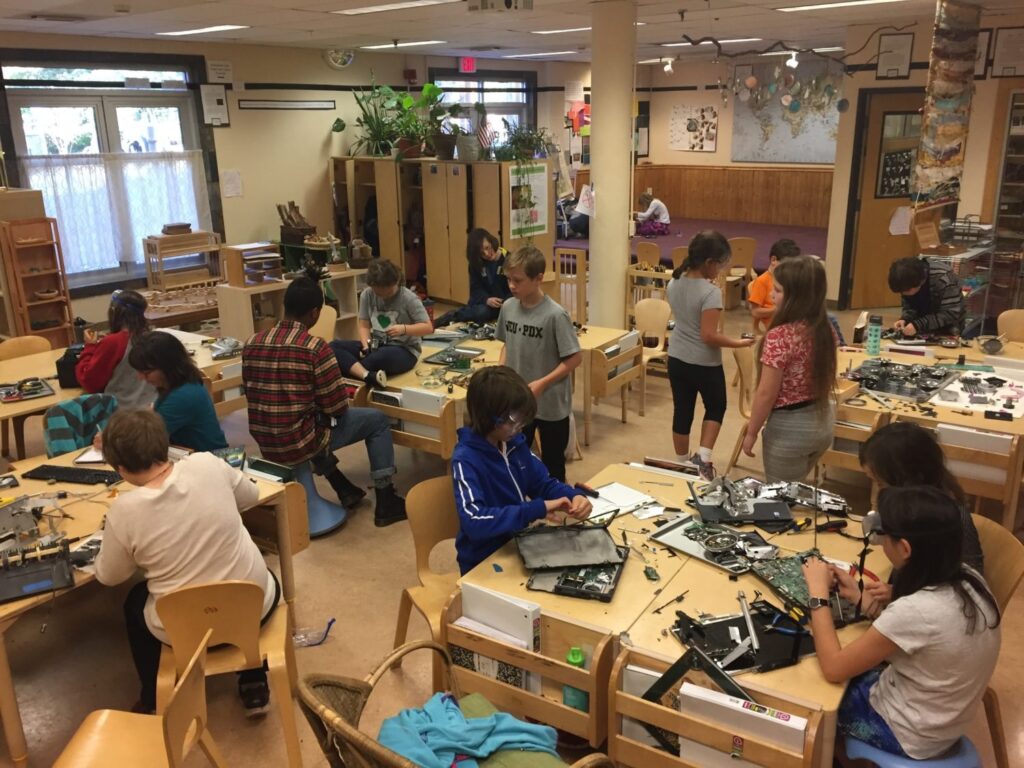
As a teacher, I wondered what this experience would feel like for children, especially these children, the oldest children of our school. What would happen when they were immersed in entirely new (well, actually old and recycled) materials, materials so very different from many of the materials they traditionally work with in the classroom, such as paint or clay or ink – a material consisting of many loose parts, foreign pieces and surprises. I wondered if this experience might invite a chance for these really experienced Opal kids to be beginners and approach materials with new eyes? Would this feeling of “new eyes” with a super engaging material open new connections and perspectives – a reset of sorts? I was curious if some of the social tensions that we’d been experiencing in the classroom would dissipate in this new structure with these new materials. Would Maker’s Workshop invite relaxed alertness? I wondered what I might learn about individual students that I hadn’t known before, what might they learn about themselves and each other.
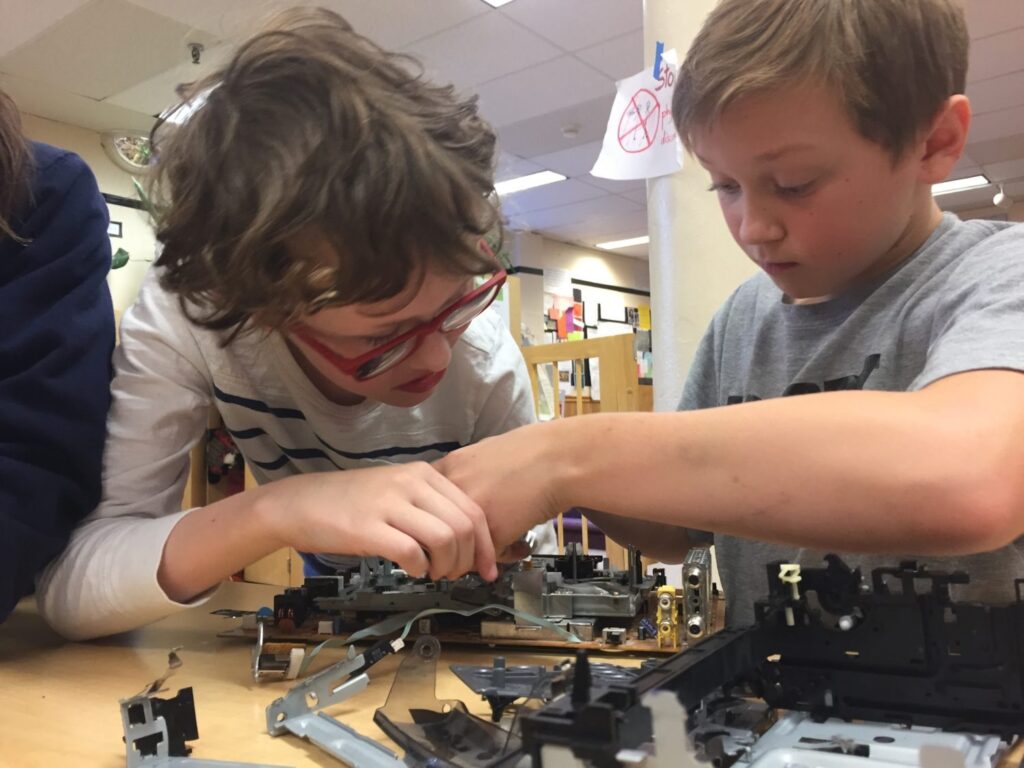
There was an absolute hum in the room as unique partnerships rallied around the dismantling of old machines and parts with goal of preserving as many pieces as possible.
SE: So worth it!
AS: One screw down- too many to go!
CN: The more screws we get off the more interesting things we’ll get to see. Yowzamolly!
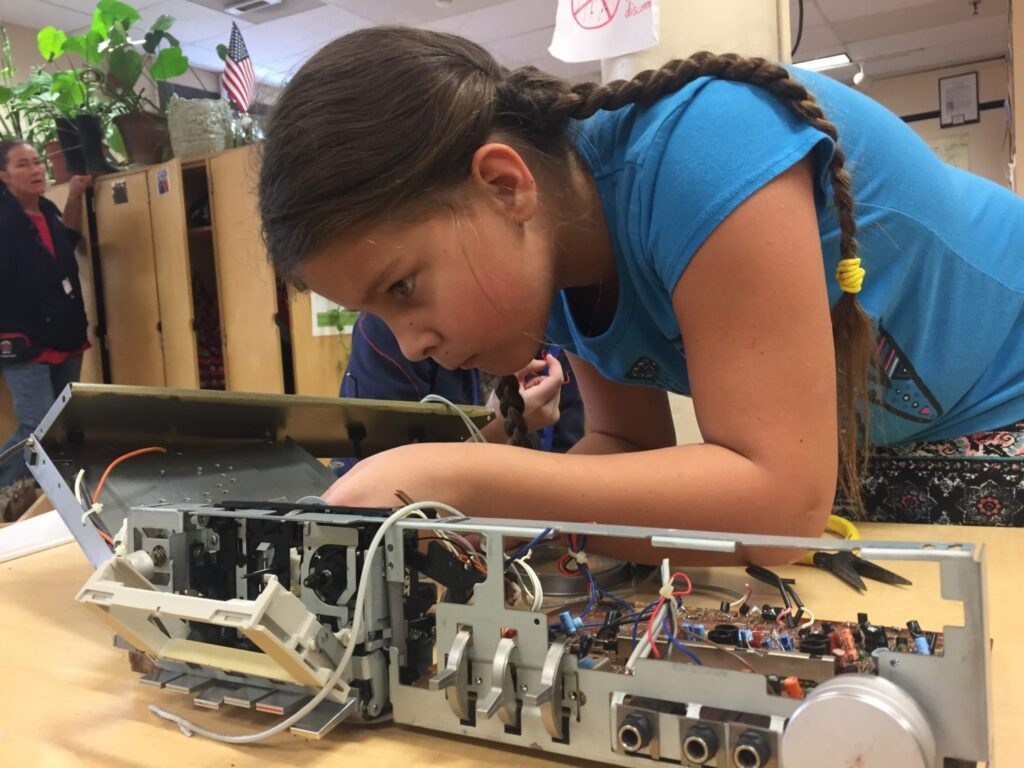
As the children reflected upon their first experience, this is what they had to say:
KN: I didn’t know so much could happen in a small piece of something – the computer we took apart had so much detail in it.
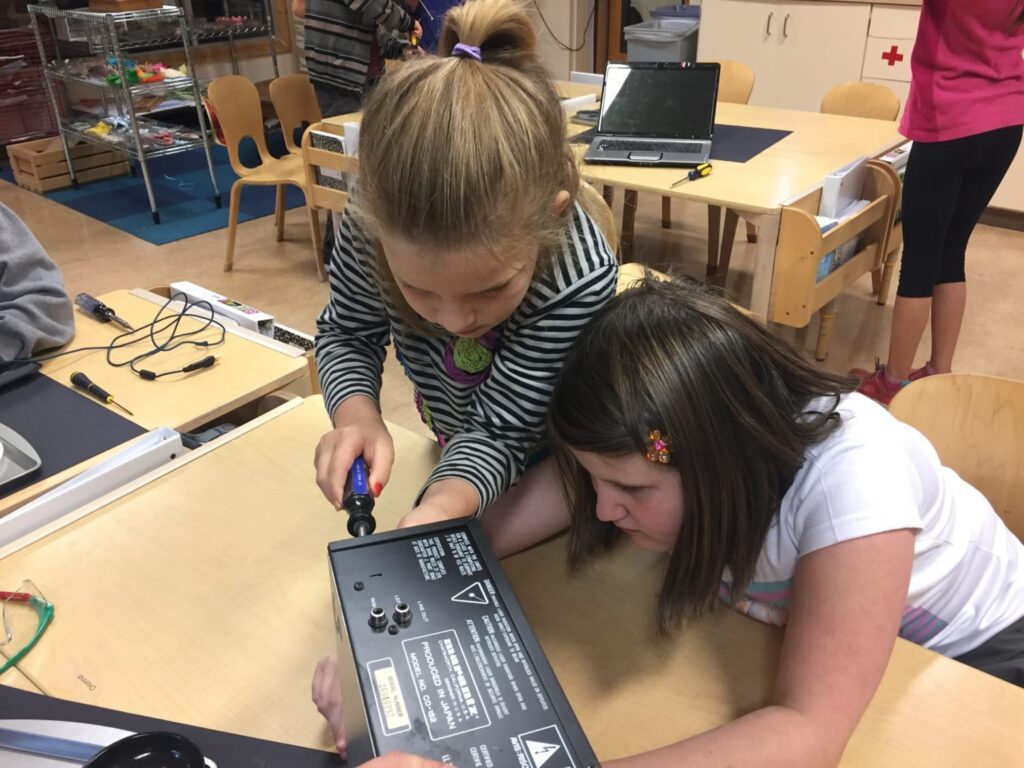
SE: The tape player we were taking apart had little parts and it kept getting exciting the more we took a part and we just didn’t want to stop. There were screws and things and it felt like you didn’t know what was underneath and it was really exciting. You always think the one screw is going to be the one that opens up the next layer. There were layers and layers.
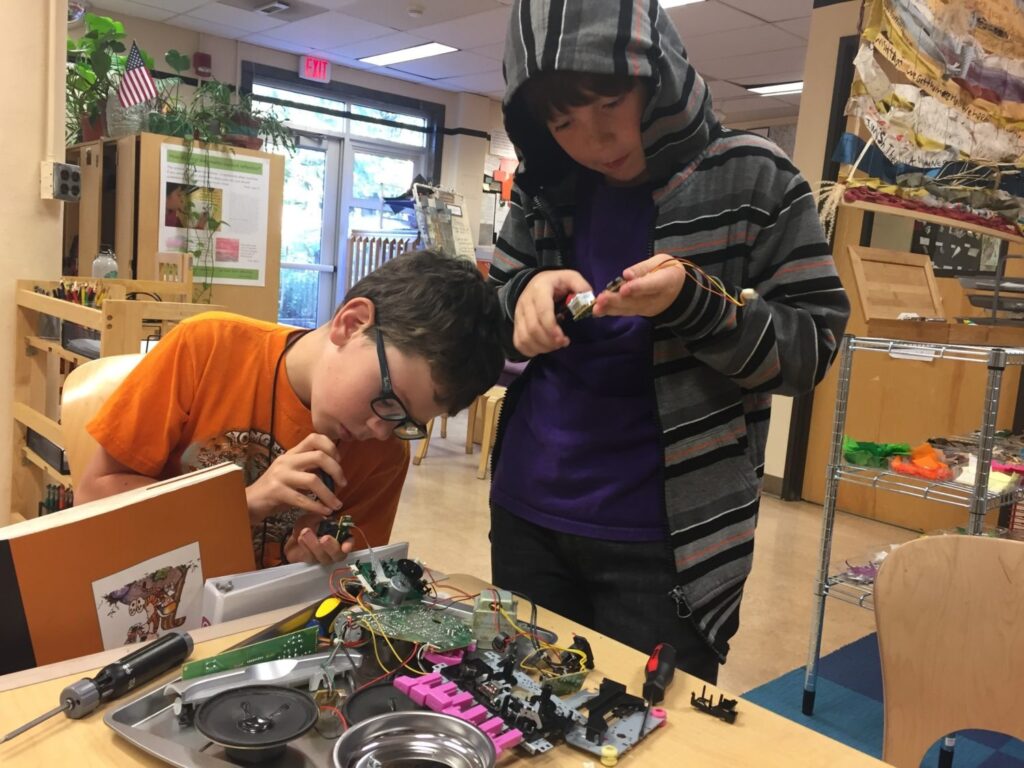
LD: It’s like a treasure hunt. Everytime you unscrew it’s like a little door and you want to be careful taking it out. It felt good to work with someone else. You can’t take all that apart with just two hands.
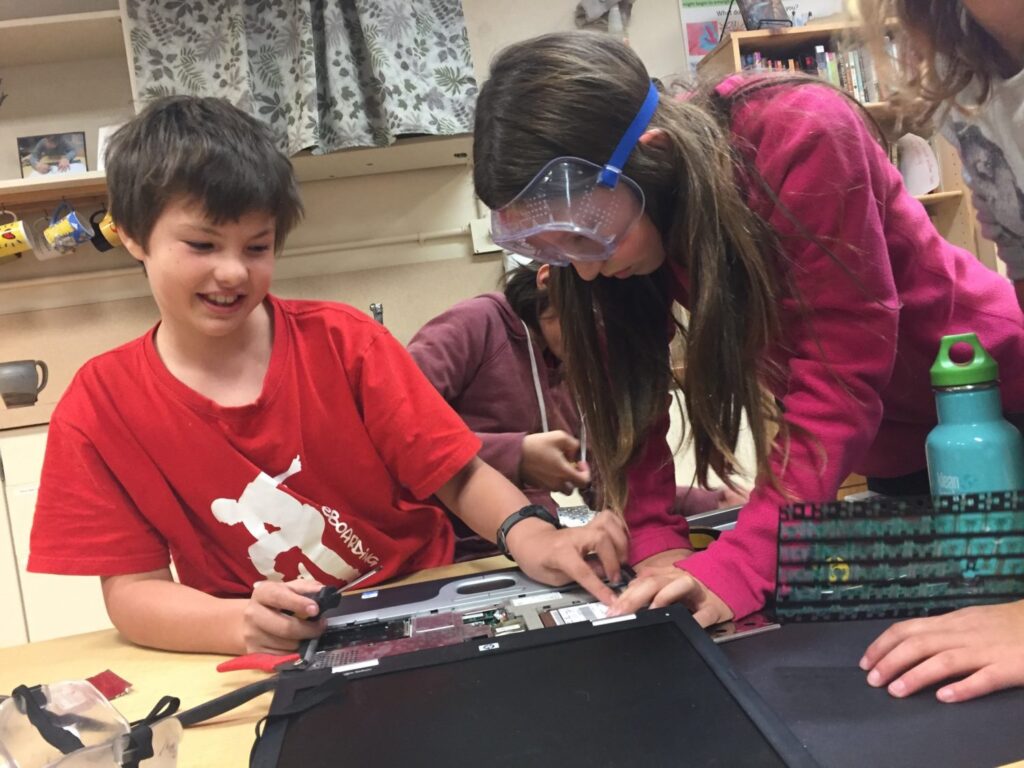
AB: I felt intrigued and wondered what was under all those screws.
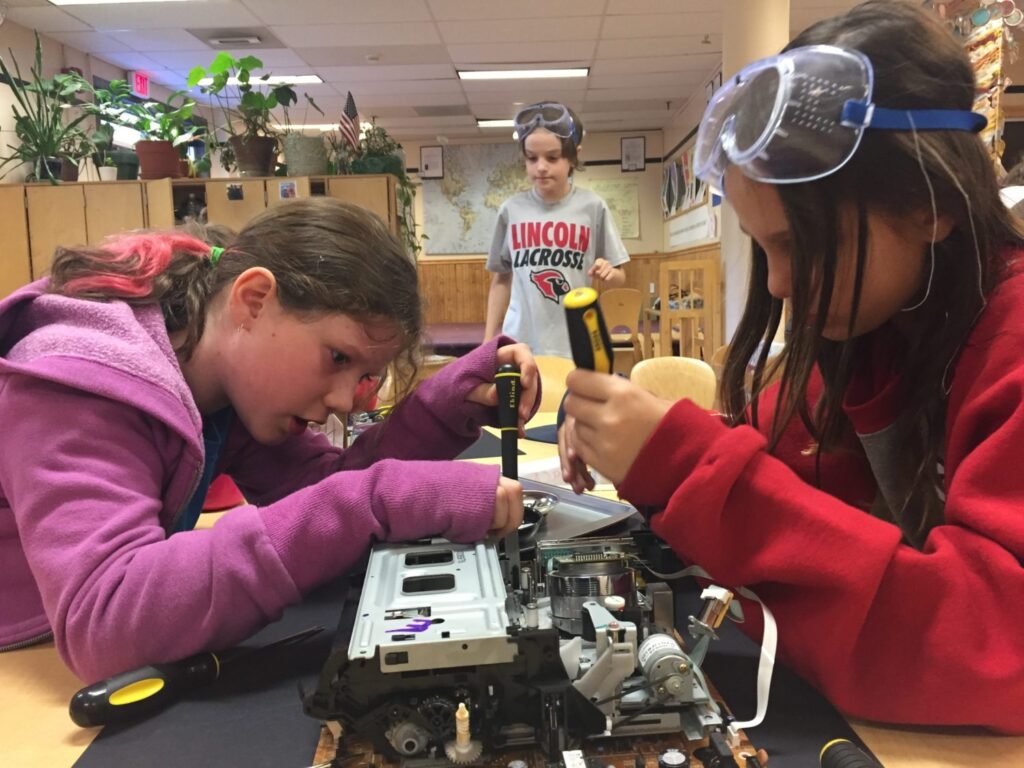
EC: It got kind of tiring – some screws wouldn’t come out.
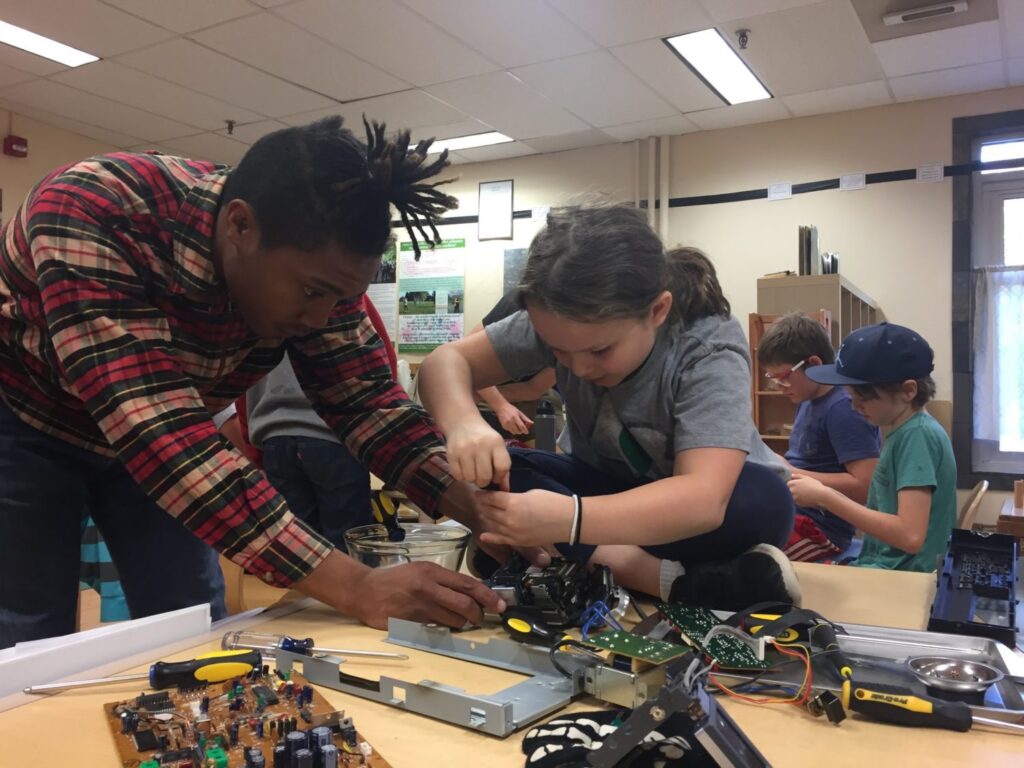 LR: There were so many screws we couldn’t take out all of them – kind of like there were at least 100 screws – we just kept taking them out and really I just kind of wanted to rip them out. I wasn’t that patient and I got the wire cutters.
LR: There were so many screws we couldn’t take out all of them – kind of like there were at least 100 screws – we just kept taking them out and really I just kind of wanted to rip them out. I wasn’t that patient and I got the wire cutters.
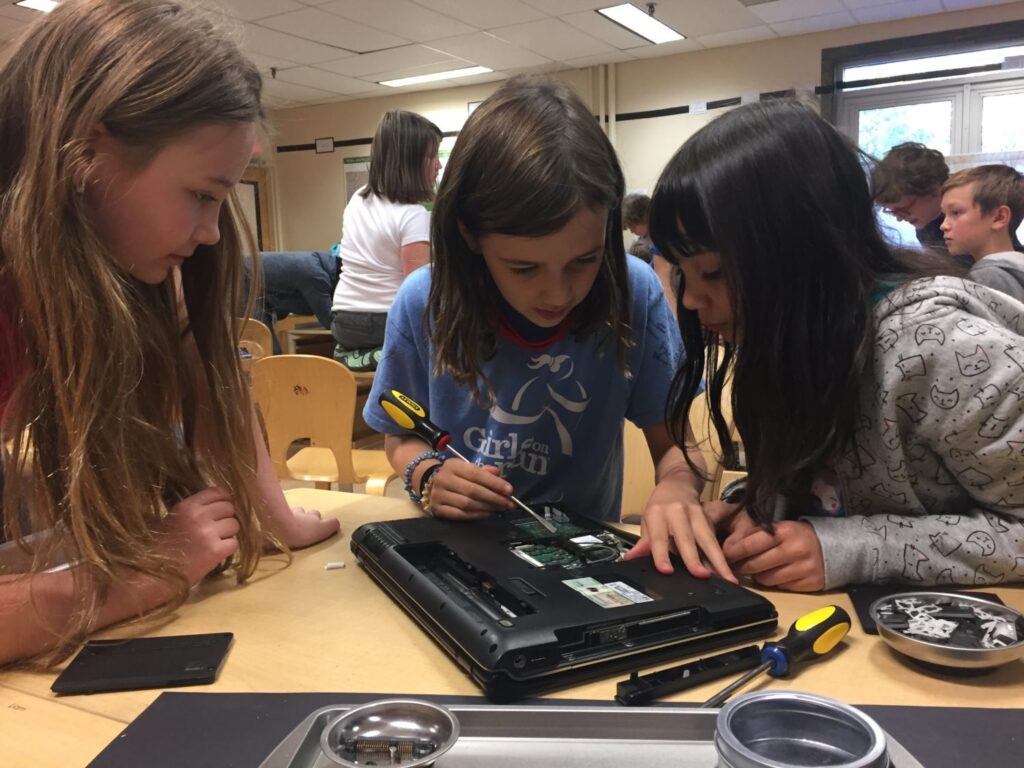
Within the children’s reflections on their work with materials, I couldn’t help but see this experience as a metaphor for some of their work within the community and wondered how they might begin to make these connections as well. What happens when we replace materials with friends? What “conflicts” happen between the children and materials and how can they carry their learning and reflections on these “conflicts” to other relationships (people) — like slowing down, staying curious, paying attention, being flexible, asking a friend for ideas when they get stuck, walking away when frustrated, etc. What happens when we approach getting to know the people in our community in the same way that we carefully seek treasures within an old cassette player, knowing that there are many little doors to each of us that get opened with each new experience we have together? And can’t we all relate to that feeling of so many screws and just wanting the wire cutters to fix our problems even though we know we’ll learn so much more and find so many more treasures if we slow down and try to uncover layer after layer?
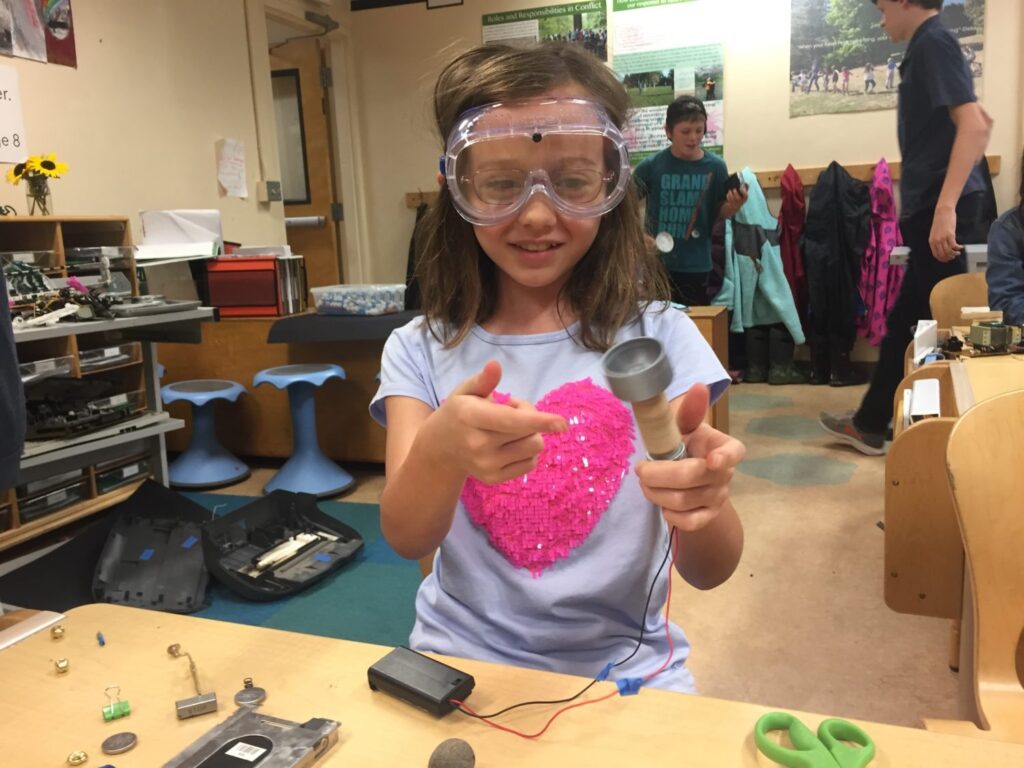
And in the end, maybe the reset provides just enough rejuvenation to keep us grounded in this work, to inspire us to dig a little deeper when it feels hard and resist that urge to grab the wire cutters?
I’m curious:
What are ways that you’ve supported children to see themselves and each other with “new eyes”?
When you’re experiencing conflicts while building community, what kinds of challenges do you offer the children?
In this story, what beliefs do you think the teachers are carrying about the children and the community?
What is your story about how conflict in a classroom became an opportunity for learning and growth?

This is an inspiring examination of the connection between exploration of complicated machinery and complicated human machines. I definitely relate to the idea of loosing patience and reaching for the wire cutters, but then, ultimately, all the pieces don’t remain whole if the wire cutters are employed; much better to uncover those layers piece by piece. And who knows, you might just find something entirely unexpected!
So exciting to read the perspectives of so many members of the community here: children, teachers, and now parents with Emily’s comment. Loose parts being integrated into a sophisticated system!
The photos hold so much energy, and express such engagement! Have you used these photos while reflecting with your students? I’m wondering if the energy held in the photos would support those who tend to be quieter in the reflection meetings–to look at them first, then write. Maybe this is what you did. Thanks for sharing! So curious what they will do with all the loose parts!?